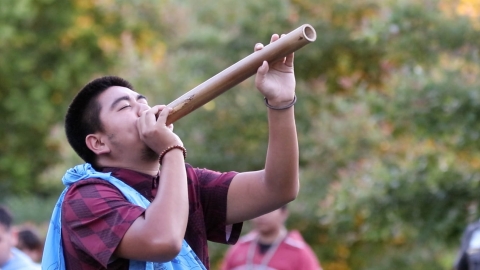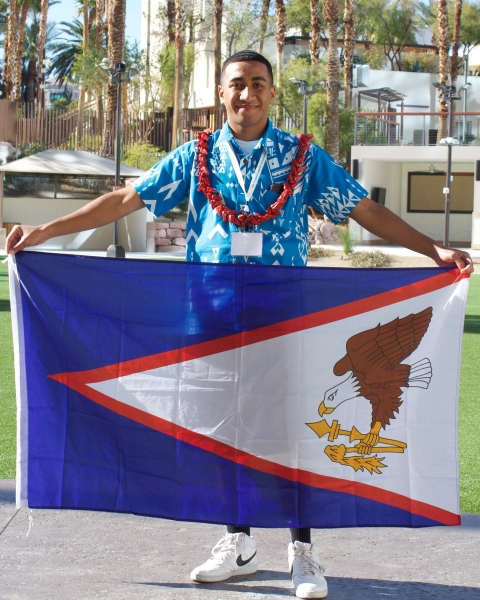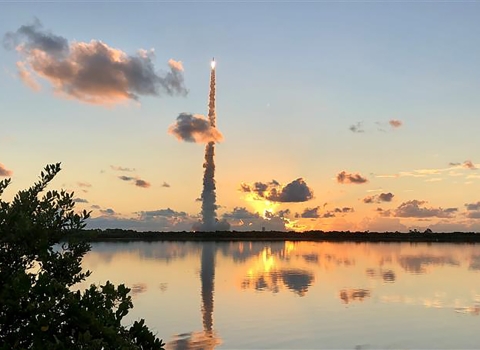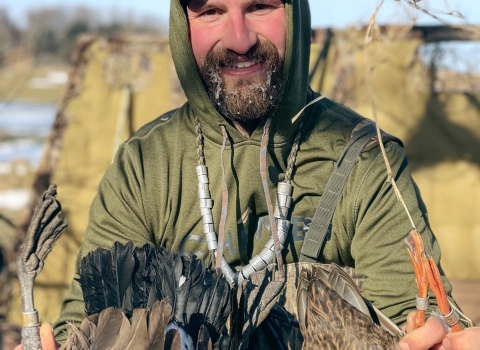Every summer since 2015 high school students from federally recognized Tribes across the continental United States, Alaska, Hawaiʻi, American Samoa, and Saipan gather at the National Conservation Training Center in Shepherdstown, W.Va., for the Native Youth Climate Adaptation Leadership Congress. For one week, the students network; explore culture, tradition, and science; and engage in leadership and conservation training. The mission is to develop future conservation leaders with the skills, knowledge, and tools to address environmental change and conservation challenges, thus better serving their schools and communities.
Created through a partnership with the Service, multiple other federal agencies, New Mexico Wildlife Federation, Aspen Institute, Tribes, and Indigenous communities, the Congress has engaged more than 656 youth and 170 mentors. It not only provides an opportunity for Indigenous youth to come together for leadership development but also empowers them to work on the conservation challenges their communities face. Through teamwork, participants in the Congress create solutions to issues they are passionate about.
Endangered species conservation and recovery are uniquely tied to Tribal, Alaska Native, Native Hawaiian, and Pacific Island communities, and Indigenous organizations are important partners.
Many threatened and endangered species have significant cultural and ecological value to Indigenous communities. For instance, the threatened Humboldt marten has been part of the Yurok Tribe’s ceremonial regalia since time immemorial.
Ancestral lands and traditional ecological knowledge have played a vital role in conservation, and Tribes and Indigenous communities have been integral in the recovery of numerous species, including the bald eagle.
As we celebrate the Endangered Species Act 50th anniversary and look to the next 50 years of species conservation, the voices of Indigenous youth are more important than ever.
Meet Bainivalu Davetawalu
Bainivalu Davetawalu is American Samoan and attended the Congress as a junior faculty member. Junior faculty are college-age Indigenous youth who serve as mentors to the high school students. They participate in leadership and career training during the Congress to grow leadership capacity for Indigenous communities. The junior faculty serve an integral role in supporting the students at the Congress.
Davetawalu got involved in conservation through work with an environmental nonprofit, Finafinau, named for the Samoan term for resilience, focusing on development, conservation, and sustainability. He also interned with American Samoa Climate Network Action, where he focused on invasive species invasive species
An invasive species is any plant or animal that has spread or been introduced into a new area where they are, or could, cause harm to the environment, economy, or human, animal, or plant health. Their unwelcome presence can destroy ecosystems and cost millions of dollars.
Learn more about invasive species removal. At the Congress, Davetawalu supported students in their work to develop a project that would establish mangroves in a specific location on American Samoa to address sea level rise and provide wildlife habitat. Davetawalu highlighted that his community has already been a victim of climate change climate change
Climate change includes both global warming driven by human-induced emissions of greenhouse gases and the resulting large-scale shifts in weather patterns. Though there have been previous periods of climatic change, since the mid-20th century humans have had an unprecedented impact on Earth's climate system and caused change on a global scale.
Learn more about climate change and the use of natural resources to combat climate change effects was a way to honor the cultural practices of his people and avoid infrastructure such as seawalls that further break the land.
When looking to the future of conservation, Davetawalu shares that “most of the world depends on wildlife and natural resources, and with the status quo and where we’re at right now, it’s hard to envision getting back to a place where everything is stable.” He wonders, “How are we going to combat the challenges? And who are we going to turn to? Are they going to help us? The support. Is it going to be there? Will it be enough to sustain and conserve our wildlife and our natural resources?”
Davetawalu sees the way forward through education. He feels that amplifying wildlife education is key to returning to healthy ecosystems and sustainable species populations. He mentions the value of programs like the Congress in providing a platform for deep, meaningful conversations across cultures and an opportunity to better understand the state of wildlife and natural resources in many areas. He feels a focus on what can be done right now and how younger generations can support conservation is essential.
Davetawalu looks forward to a future where Indigenous voices are at the table. “It gets me excited and gives me hope that there will very soon be a table filled with Indigenous voices and that we as a collective are going to combat the challenges and build a better future for our generation.”
He adds, “I’m excited to see an environment where traditional practices are being used again to help benefit natural resources and wildlife.”
Meet Asa Samuels
Asa Samuels is from the Choctaw Nation of Oklahoma and a citizen of the Cheyenne and Arapaho Tribes. He also served as a junior faculty member at the 2023 Congress. Samuels has always had an appreciation for wildlife. When he was younger, he visited Joseph H. Williams Tallgrass Prairie Preserve, saw wildlife roaming freely, and learned about the role of the Tribe in the preserve. “It was really inspiring to see and it's something that will stick with me forever.”
After this experience, Samuels enrolled in a biology program at Seminole State College and has followed that path forward to the University of Oklahoma. Samuels is passionate about pursuing conservation through an Indigenous lens and considering the cultural importance and meaning of natural resources and the environment.
He chose to participate in the Congress for the opportunity to work with Indigenous youth. “We’re talking about our future leaders, who are going to be there after we’re gone to keep our efforts going.” And he was more than impressed with the students at the summit, stating, “They had that fire in them to go into action.” Samuels emphasizes that they didn’t shy away from tough issues but used their experiences from their communities to speak openly about climate change and climate justice.
For Samuels, future conservation success hinges on education, funding initiatives, and recognition and inclusion of unique Indigenous perspectives in the development of conservation programs. He notes, “All Tribes, we are all one people, but we’re all different at the same time. We all have different cultures. We have different values. We look at things differently.”
If given the chance to create a program in their own way, Samuels notes that Indigenous communities could make a positive impact on species conservation. He also sees opportunity in education. He suggests starting wildlife conservation programs younger and ensuring colleges and universities have Native American programs. He underscores the importance of ensuring individuals from Indigenous communities can attend and graduate from institutions of higher education.
Samuels feels that the time is now to make a difference on large environmental issues such as climate change. He’s ready to get into the field, get his hands dirty, and start making an impact. He shares, “My vision for the future is bright. It's promising. When I talk to other Native people about this, it's something that they see and believe in.”
The inclusion of these important perspectives will be essential to the next 50 years of the Endangered Species Act and the conservation work ahead. And the future could not be more promising with many young minds already at work on the issues we face.





